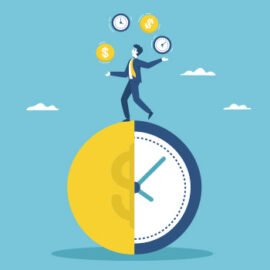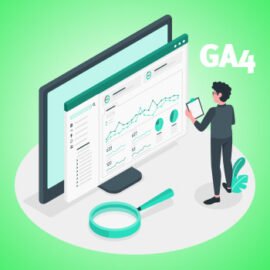
|
Getting your Trinity Audio player ready...
|
One of the most important metrics in digital marketing, especially when we work on inbound marketing, is the conversion rate.
For some, other metrics like reach, visitors, and click-through rate are just as important as conversions. This will obviously depend on each person’s objective.
In this article, we will dive a little into the subject. Check out what's ahead:
- What is conversion rate?
- How is it calculated?
- How important is it?
- How to optimize conversion rates?
What is conversion rate?
To understand what a conversion rate is, you must first know what a conversion is. A conversion is a pre-established measurement related to a specific action by a user. This can be completing a purchase in an e-commerce, filling out a form on your website or in a landing page, a subscription to a newsletter, a download of a e-book, or a registration for a webinar, for example.
Within this, we then have the concept of conversion rate. It is measured by the number of conversions generated in relation to the number of visits (when we talk about a website). At the Google Adwords, for example, the conversion rate can be the number of clicks on a specific ad, the number of hits to your blog or a specific video or even the number of calls obtained in relation to the ad.
In other words, the conversion rate is linked to the action you determined and related to the universe that revolves around it.
How is the conversion rate calculated?
On a website, for example, that receives 10,000 visitors and has 1,000 registrations (or conversions), the conversion rate is 10% (that was a piece of cake). On a Google Adwords ad that had 1,000 views the click-through rate could have been 12% (120 clicks) and the conversion rate (in relation to clicks) could have been 5% (6 purchases).
Another example could be sales made. On a website with 8,000 visitors, 160 sales were made. Applying a rule of three, we have that the sales conversion rate was 2%:
Number of sales / Number of visits *100
When we talk about virtual stores, in Brazil, the conversion rate is around 1.65%.
How important is the conversion rate?
Conversion rate is a metric that helps measure results. In inbound marketing, for example, conversion rates can be measured within the sales funnel. Defining each stage of your funnel, you will be able to measure how much your funnel is converting when moving from one stage to another and plan actions to optimize conversion rates.
Furthermore, conversion rates allow you to more accurately evaluate the return on investment of your digital marketing actions.
By analyzing your conversion rates, you can direct marketing and sales so that both teams can improve their results and bring good business to your company.
How to optimize conversion rates?
Evaluating and evolving is one of our main mantras. Therefore, conversion rates are 100% included in this concept. Some tips can help improve your results:
Have a well-defined persona
The better your design is persona, the more targeted your campaign will be. And the more likely you are to convert. Therefore, don’t get tired of reviewing your persona and understanding what their pains and needs are. This way you will be able to offer quality and objective content with greater chances of converting.
Always deliver quality
You have the persona defined, so deliver quality to him. The better your solution, the better your persona’s response will be.
Think about the experience of those who are interacting
Whether on a website, landing page, ad, button, form or any other interaction element, always think about who is on the other side. The better the acceptance, the better the conversion.
Good design makes a difference
In addition to the experience itself, a good design It is also essential for results. The conversion point, for example, like a button, must be visible and “inviting” to click. It is important to mention that there are no rules regarding colors. A button must be prominent to be seen and clicked, but it does not necessarily have to be a loud color.
The use of red is not incorrect, as many say, as it is considered the “stop” color. But if it contrasts too much and causes discomfort, don't use it. Also don't overuse flashing elements and full of special effects.
Use calls to action
This is very important. Firstly, the person must clearly know what action they should take. Avoid having more than one call to action (call to action), as this will leave the person divided about what to do. Be very clear about what you want from the user.
Also use suggestive phrases in your call to action. “Click here to register” is poorer than “Join the best minds in digital marketing”, for example.
Carry out A/B tests
Another essential point in digital marketing. Do tests in whatever is necessary. From the color of the button to the place the form is located, all elements and texts can always be improved. But remember: change one at a time, otherwise you will lose the ability to judge what is working.
This also applies to strategies. If one side isn't good, try the other. Change the acquisition channels, the message, whatever. But don't stand still. After all, the digital world allows for real-time changes, so use this to your advantage.
Did you like the content? How about pulling our e-Book on Web-Analytics? Just click on the banner.

Marcel Castilho is a specialist in digital marketing, neuromarketing, neuroscience, mindfulness and positive psychology. In addition to being an advertiser, he also has a Master's degree in Neurolinguistic Programming. He is the founder and owner of Vero Comunicação and also the digital agency Vero Contents.





Comments are closed.